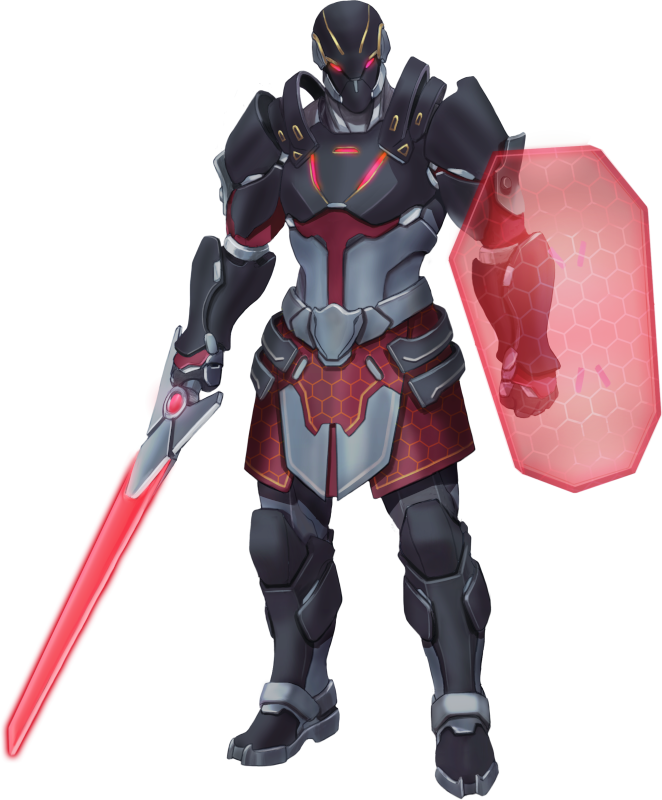Officer 250 points
The
Officer excels at command and control. He’s mastered the
art of planning, and can plan so well that he features the use of
Foresight, allowing the player to retroactively declare that
his character had prepared for some presently occurring eventuality.
Furthermore, his high rank and administration skill makes him
top-notch at Pulling Rank, ensuring that he and his group gain
required resources when they need it most. Finally, Psi-Wars doesn’t
support Mass Combat out of the box, but should your game include Mass
Combat, the officer’s high levels of Strategy, Administration and
Intelligence Analysis make him particularly well suited to it.
The
Officer is at his strongest when he’s analyzing existing data,
engaging politicians and bureaucrats, and when he’s planning.
Outside of situations, he has decent knowledge-gathering skills and
social skills (and the option of gaining access to considerably
influential contacts), and reliable, if not great, combat skills.
He’s no front-line soldier.
Most
officers are either naval (taking Shiphandling) or army (taking
Soldier), but both are strictly optional. Technically, an Officer
can belong to any group, any branch of the military. However, he
must belong to some group. His signature is his high
rank, thus he necessarily serves a duty.
Attributes: ST
10 [0], DX 12
[40];
IQ 14
[80];
HT 11 [10]
Secondary
Characteristics: Damage
1d-2/1d; BL 20 lbs; HP 10 [0]; Will 14
[0]; Per 14
[0]; FP 11 [0]; Basic Speed 6.00 [5]; Basic Move 6 [0] 5
Advantages:
Born
Warleader 4 [20]. Foresight 1 [10],
Luck [15], Rank
(Any) 4 [20];
●
Choose a
total of 30
points from the following: improves
IQ [20/level] or HT [10/level], Ally (Robot, 50%, almost all the
time) [9], Charisma +1 to +4 [5/level], Cheaper Gear (Any) [1],
Contacts
(Aristocrat, Corporate Supplier, Lobbyist, Mercenary, Spy, Skill 12,
15 or 18, 9 or less) [1, 2 or 3], Contact
Group (Corporation,
Military Branch, Intelligence Agency, Mercenaries,
skill 12, 15 or 18, 9 or less) [5, 10, 15],
Eidetic
Memory or Photographic Memory [5 or 10],
Favor
(Any) [varies], Hard to Kill [2/level], Higher Purpose (Against
Impossible Odds) [5], Looks Good in Uniform [1], Penetrating Voice
[1], Rapier Wit [5], Reputation
(Conqueror, War Hero, almost everyone) +1 to +2 [5 or 10], Reputation
(Good Officer, military men only,) +1 to +2 [3 or 5];
Serendipity [15/level], Signature Gear (Any) [varies], Voice [10],
Wealth (Comfortable or Wealthy) [10 or 20], Improve Luck to Extreme
Luck [30] for 15 points, Rank to 5 [25] for 5 points
Disadvantages: Duty
(Almost Always, Extremely Hazardous) [-20]; ● Choose -30 points of ST -1 [-10], Basic Move -1 or -2 [-5 or -10], Bloodlust [-10], Callous [-5], Chummy or Gregarious [-5 or -10], Code of Honor [Varies], Bully [-10*], Fanaticism [-15], one of Overweight, Fate or Very Fat [-1, -3 or -5], Greed [-15*], Honesty [-10*], Intolerance (Rival Faction or Aliens) [-5 or -10], Jealousy [-10], Laziness [-10], Lecherousness [-15*], No Sense of Humor [-10], Obsession (defeating a specific foe) [-5], Overconfident [-5*], Secret (Unsanctioned missions or war crimes) [-10 or -20], Selfish [-5*], Sense of Duty (Team or Faction) [-5 or -10], Skinny [-5], Trademark (Characteristic tactics) [-5 or -10], Trickster [-15*], Workaholic [-5], Unfit or Very Unfit [-5 or -15],
Primary
Skills:
Administration
(A) IQ [2]-14; Intelligence Analysis (H) IQ+41
[4]-18; Savoir-Faire (Military) (E) IQ+41
[1]-18; Strategy
(H) IQ+41
[4]-18;
Tactics (H) IQ+41
[4]-18; ●
Choose
one of Public
Speaking, Propaganda, Teaching all
(A)
IQ+1 [4]-15, Expert Skill (Military), Psychology or Shiphandling all both (H) IQ
[4]-14.
Secondary Skills:
Beam Weapons (Pistol) (E) DX
[1]-12; Stealth (A) DX+1
[4]-14;
●
Either Brawling (E) DX+2
[4]-14
or
Karate (H) DX [4]-12;
●
Either
Judo (H) DX [4]-12
or
Wrestling (A) DX+1
[4]-13; ●Choose one of Savoir-Faire (Any) IQ+2 [4]-16, Politics (A) IQ+1 [4]-15, Diplomacy (H) IQ [4]-14 or Intimidation (A) Will+1 [4]-15; ● Choose five
of Beam
Weapons (Rifle or Projector), both (E) DX+1 [2]-13; Area
Knowledge (Any), Current Affairs (Headline
News, Politics, Regional)
both (E) IQ+1 [2]-15, Architecture, Cartography, Public Speaking,
Propaganda, Research, Soldier,
Teaching, Writing all (A) IQ [2]-14, Engineering (Civil or Starship),
Expert Skill (Military Science), Law (Galactic), Psychology or Shiphandling all (H) IQ-1 [2]-13 or Hiking (A) HT [2]-11.
Background
Skills:
Computer Operation (E) IQ [1]-14;
Navigate (Hyperspace) (A) IQ-1 [1]-13;
Pilot (Starship)
(A) DX-1
[1]-11;
Vacc Suit (A) DX-1 [1]-11;
and 20 points chosen from a background lens.
1:
+4 from Born Warleader
*Modified
by Self-Control Rating
Officer Power-Ups
Personal Army 25 points
Advantages: Spend 25 points on Ally (75
points, 150 points, 300 points, almost all the time (15 or less)) [3,
6 or 15], Ally Group (BAD 2, BAD 5 or BAD 8, x5 members, almost all
the time (15 or less) [5, 12 or 24] or Ally Group (BAD 0, BAD 2 or
BAD 5, x10 members, almost all the time (15 or less) [4, 8 or 18] or
choose one of the following packages:
-
Hero and minions: Ally (300 points,
almost all the time) [15], and Ally Group (BAD 2, x10 members,
almost all the time) [8] and two points from Officer advantages.
-
Lieutenant and Elite Squad: Ally
(150 points, almost all the time) [6] and Ally Group (BAD 5, x10
members, almost all the time) [18] and one point from Officer
advantages
-
Heroic Guard: Ally Group (BAD 8, x5,
almost all the time) [24] and one point from Officer Advantages.
Career Officer 25 points
Career
Officer shifts the focus of the officer from war to politics. He
sacrifices exceptional ability with strategy, tactics, intelligence
gathering and leadership for superior administration, politics and
current affairs, as well as improved ability to Pull Rank.
Advantages:
Charisma +1 [5] and replace Born Warleader 4 [20] with
Intuitive Statesmen [40] for 20 points;










